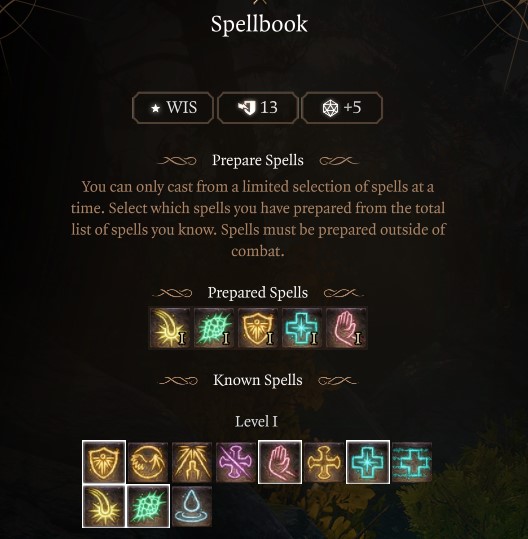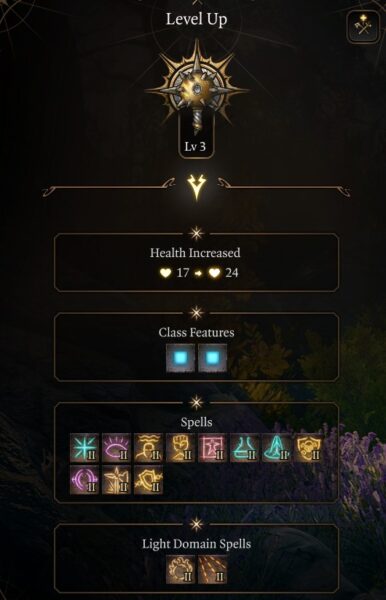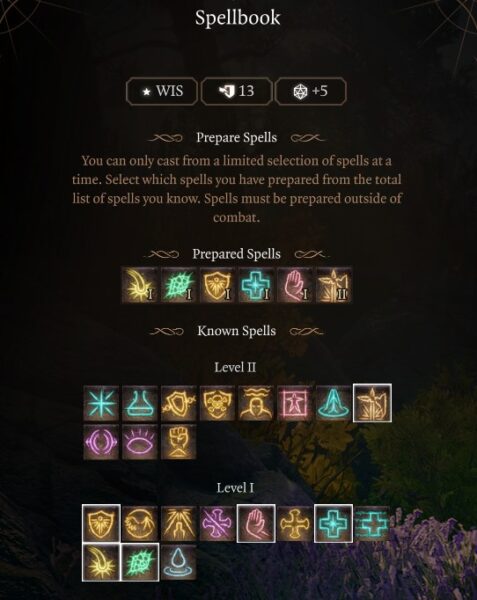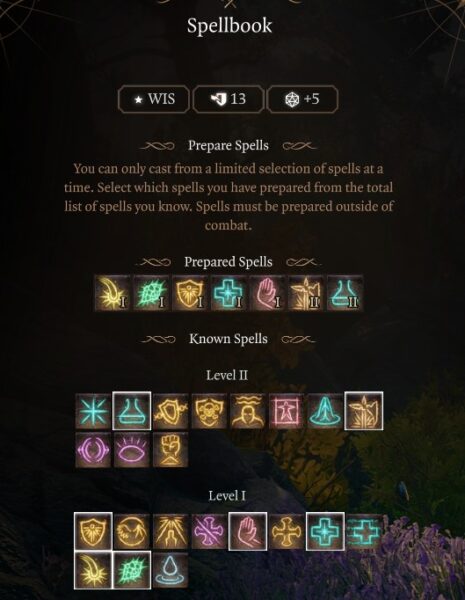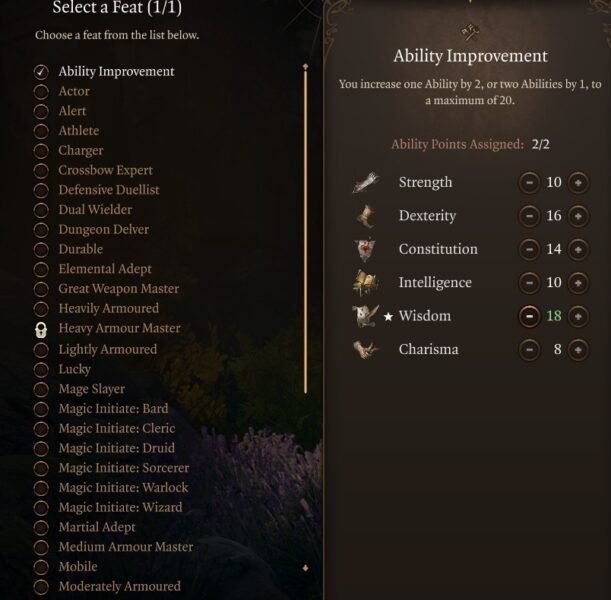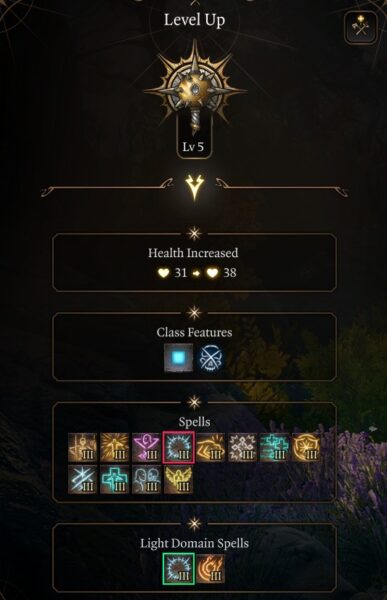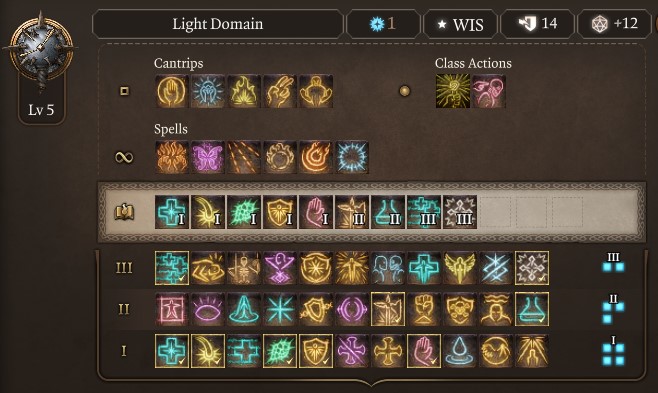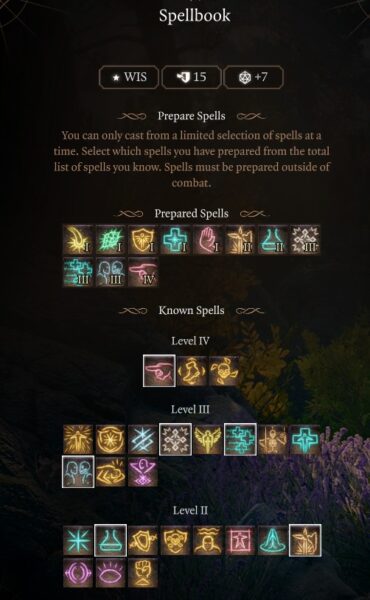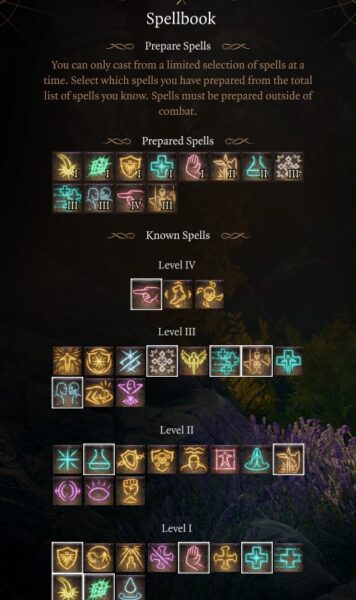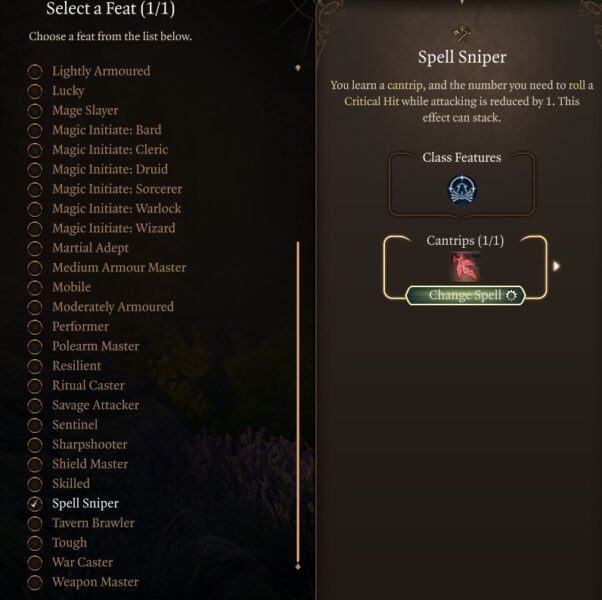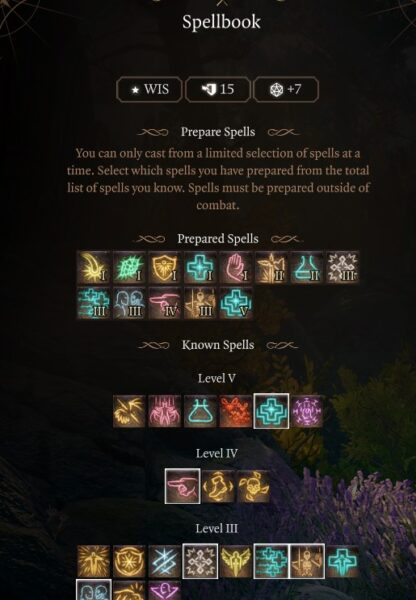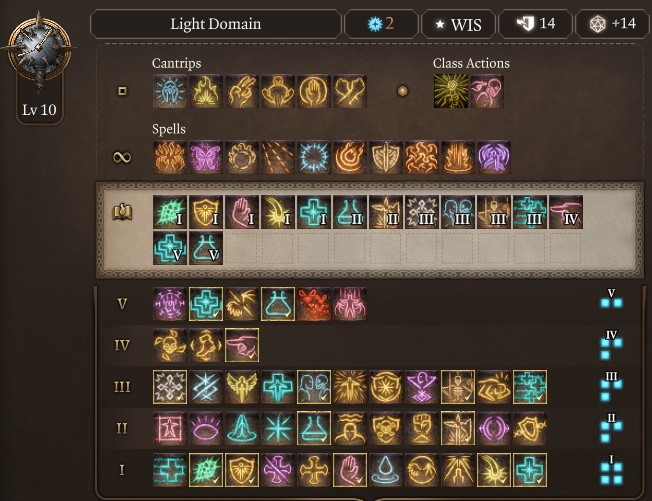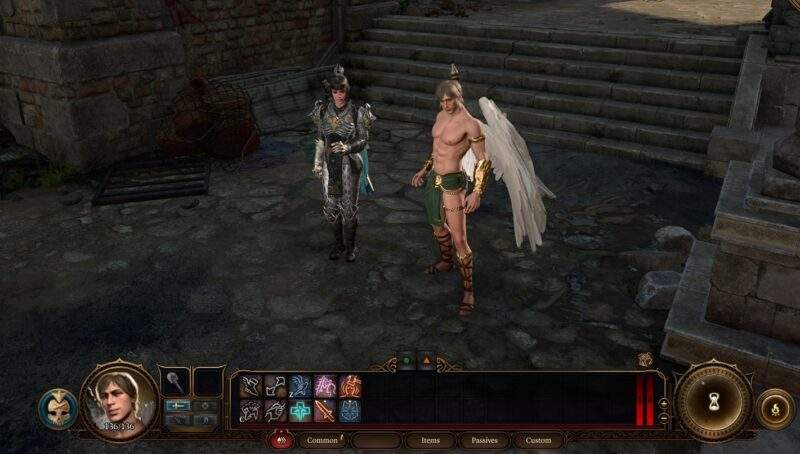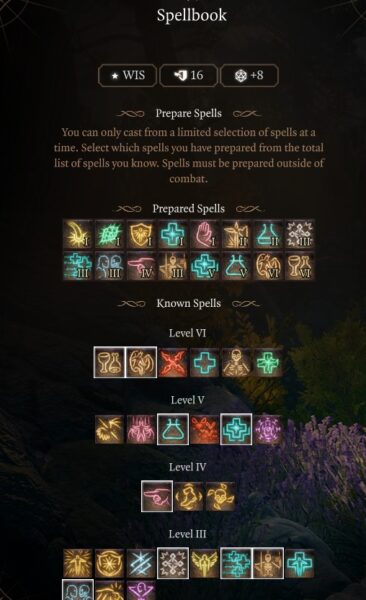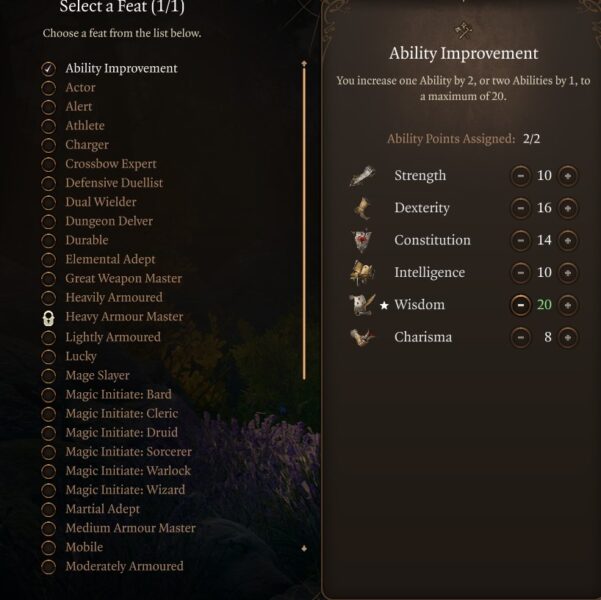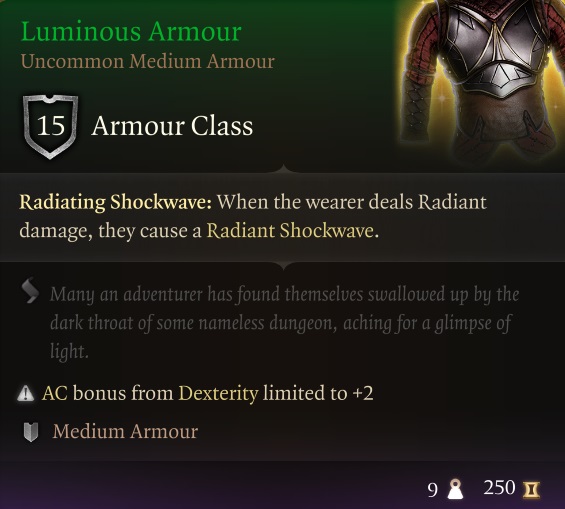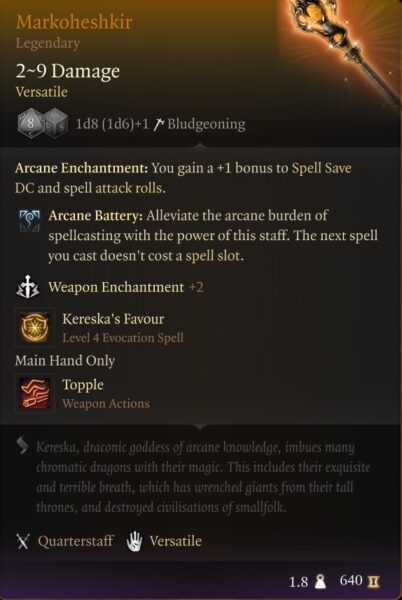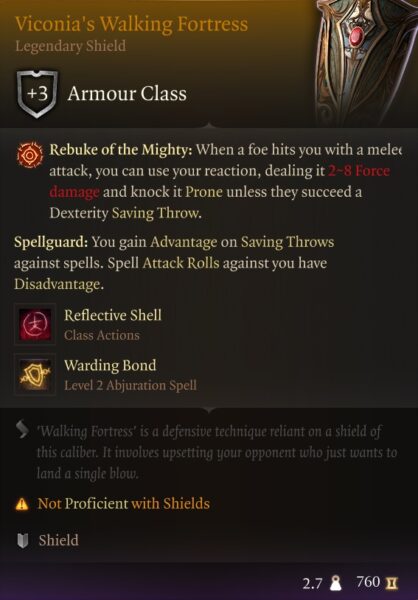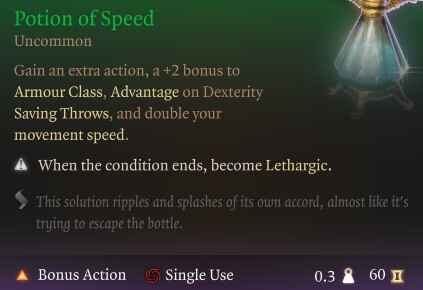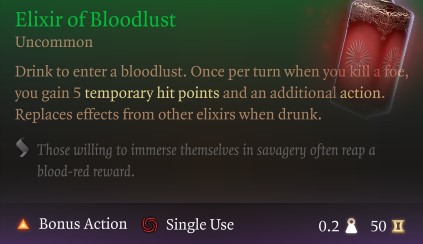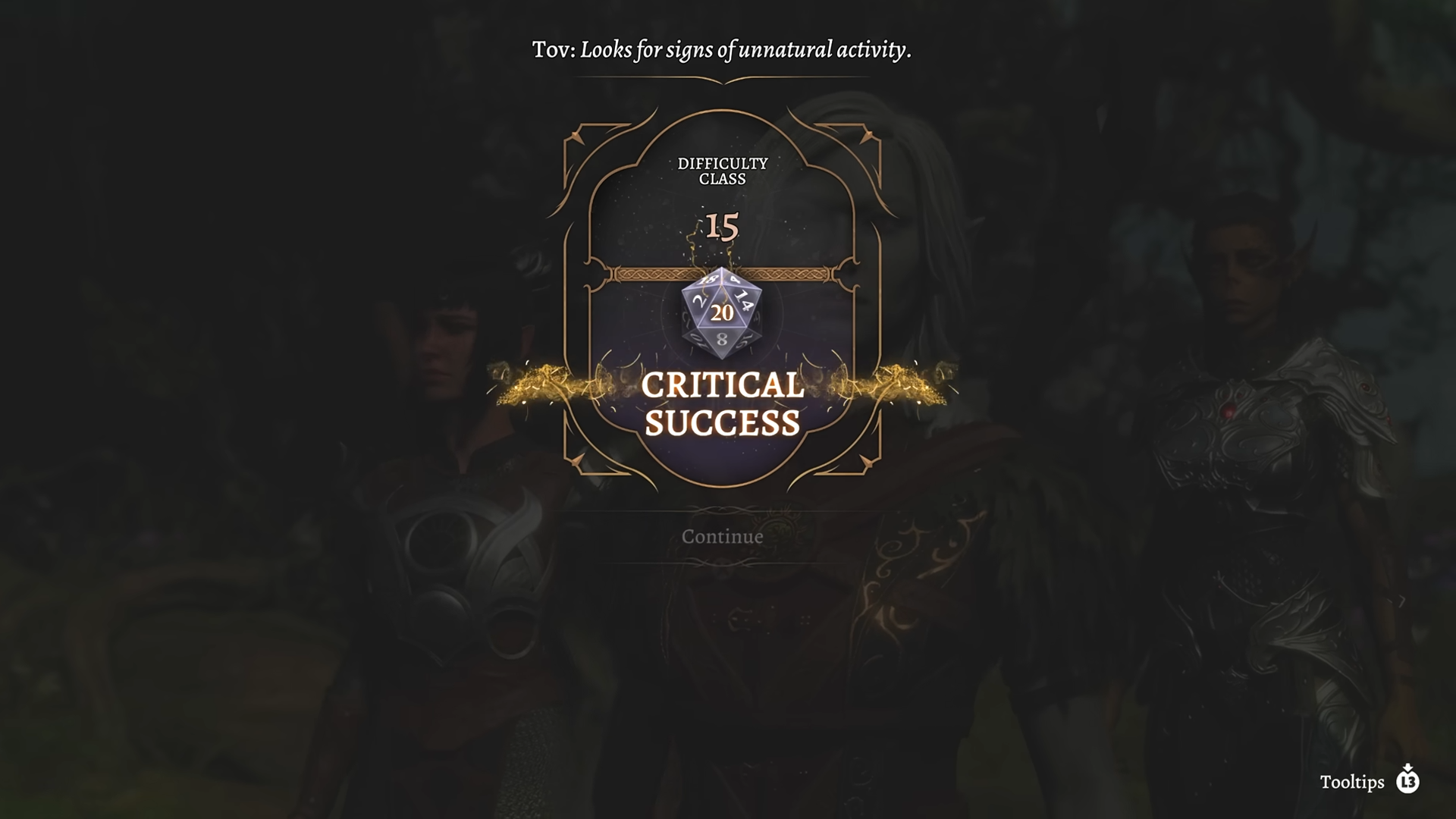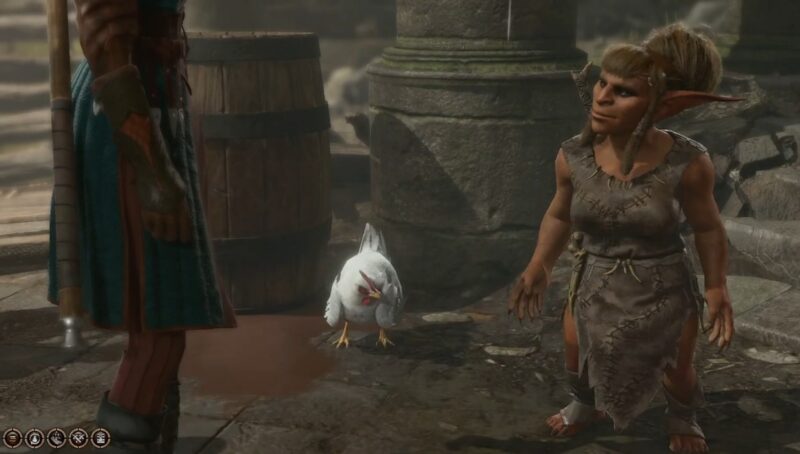The guide focuses on the best cleric in Baldur’s Gate 3, the Light Domain subclass, and includes all components to build a powerful character.

- Changes in Patch 8 for BG3
- Features & Mechanics
- Subclasses
- Level Progression
- Alternative Build
- Best Gear
- Best Consumables
- Gameplay Tips & Tricks
- Changes in Patch 7 for BG3
- Build Summary Guide
- Q1. Which cleric subclass is the best in BG3?
- Q2. What is the best species for a cleric in BG3?
- Q3. What are the best classes to mix with Cleric in BG3?
This build page has been updated for the Patch 8 version of Baldur’s Gate 3.
Everything About the Cleric Class in Baldur’s Gate 3
The Cleric is a versatile class that can heal, deal with damage, or crowd control. While many think of Cleric’s as pure healers, the Light Cleric is a powerful spellcaster damage dealer. They excel at radiant area damage and have great utility for your party. This build selects the Light Cleric and optimizes the build for radiant AOE damage vs. a healer. We suggest Life Cleric for those looking to heal.
The Cleric class, in general, has various weapon and armor proficiency, giving you many options in builds. Moreover, you gain shield profienceny to equip a mace or a quarterstaff with a shield and increase survivability immediately. The downside of the Cleric is the weak mobility and bonus action utility. The Cleric can’t use their bonus action for many things outside of a few spells. Additionally, it’s harder for the Cleric to gain extra actions or cast two spells in one turn. With many concentration spells, a Cleric spellcaster will have to make sure only to cast one or forgo the previous spell’s effect.
However, players who want an offensive spellcaster that can heal or provide support on demand will love the Light Cleric build.
| Pros of Cleric Build | Cons of Cleric Build |
|---|---|
| High Survivability | Less Support Spells |
| Great Damage | Weak Mobility |
| Good Range | Concentration Spell Heavy |
Light Domain Cleric Build Changes in Patch 8 for BG3
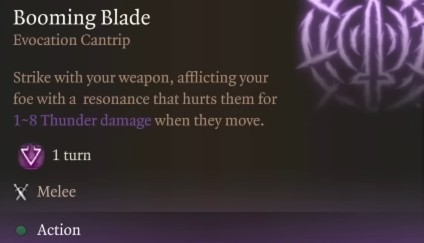
The biggest changes to the Cleric comes from new cantrip Booming Blade. This is helpful for a melee build, though the Cleric Death Domain uses it best. The Cleric playstyle of healer, tank, or radiant damage dealer remains largely unchanged. There were some additional buffs to monsters that makes Tactician Mode and Honour Mode more difficulty, so keep this in mind when you are planning your builds.
If you are looking to maintain survivability without sacrificing offensive capabilities, the Light Domain offers a compelling alternative when multiclassed with Fighter. Its emphasis on radiant damage and crowd control, along with strong defensive spells, makes it a versatile choice for players seeking a more balanced approach in tougher encounters. We’ll include an alternative build below that outlines how to create a more tank-like build for the Cleric.
Cleric Features & Mechanics
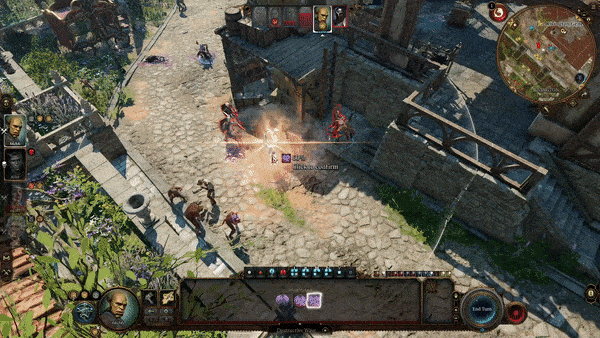
The following list are key features and class mechanics of the Light Cleric in Baldur’s Gate 3:
- Primary Ability: Wisdom
- Saving Throws: Wisdom and Charisma
- Subclass: Light Domain
- Weapon Proficiency: Simple Weapons, Morningstar, and Flail
- Armour Proficiency: Light armour, Medium armour, and Shield
- Preferred Armor: Medium
- Preferred Weapon: Quarterstaff and Shield
- Warding Flare: Use your reaction to impose Disadvantage on an attacker, possibly causing their attack to miss.
- Radiance of the Dawn: The sun’s divine power dispels any magical darkness.
- Potent Spellcasting: Your god grants you even more intense power. You can add your Wisdom Modifier to the damage you deal with cantrips.
All Subclasses Explained – Recommended Subclass
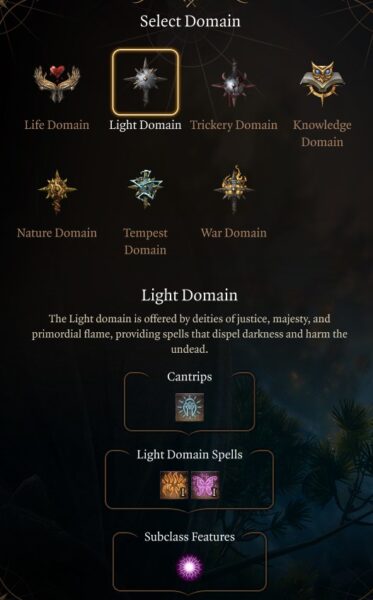
The Light Domain subclass has a good balance of damage and healing with a focus on damage. It is the favorite choice of many players. Dealing damage equal to Sorcerers or Wiazrds early on in the game is hard because of the lack of versatile area of effects spells. However, the more levels you get on your Light Domain Cleric the more powerful you’ll feel. This class is extremely powerful and one of the best in mid to late-game combat. Whatever subclass you choose, the next steps will be similar, and the build slightly changes, so we suggest the Light Domain for the best results.
Here are all Cleric class subclasses:
- Knowledge Domain: Dedicated to the pursuit of knowledge and skilled in history, religion, and the arcana.
- Life Domain: They are skilled in the use of healing spells, and they can also use their divine power to restore hit points to their allies
- Light Domain: Skilled in radiant damage and more offensive Cleric subclass.
- Nature Domain: Skilled in the use of nature’s spells, and they can also use their divine power to control the weather and animals.
- Tempest Domain: Skilled in the use of lightning and thunder damage spells, and they can also use their divine power to control the weather and create powerful storms
- Trickery Domain: Skilled in the use of illusion and enchantment spells, and they can also use their divine power to create illusions and disguise themselves
- War Domain: Skilled in the use of weapons and armor, and they can also use their divine power to enhance their martial prowess.
Baldur’s Gate 3 Light Cleric Features & Progression
The Light Cleric subclass unlocks the following features and spells:
- Faerie Fire (Level 1): All targets within the light turn visible, and Attack Rolls against them have Advantage.
- Burning Hands (Level 1): Each flammable target is hit with 3∼18 Fire damage.
- Warding Flare (Level 1): Shield yourself with divine light. Use your reaction to impose Disadvantage on an attacker, possibly causing their attack to miss.
- Radiance of the Dawn (Level 2): 3-21 radiant damage the sun’s divine power dispels any magical darkness.
- Flaming Sphere (Level 3): Summon a flaming sphere that damages nearby enemies and objects. You can move the sphere.
- Scorching Ray (Level 3): Hurl 3 rays of fire. Each ray deals 2∼12 Fire damage.
- Daylight (Level 3): Enchant an item to shine like the sun or summon a sphere of sunlight that dispels all darkness around it.
- Fireball (Level 3): Shoot a bright flame from your fingers that explodes upon contact, torching everything in the vicinity.
- Improved Warding Flare (Level 6): When an enemy attacks an ally, you can use your reaction to impose Disadvantage on the Attack Roll.
- Wall of Fire (Level 7): 5-40 fire damage, creates a blazing wall of fire.
- Guardian of Faith (Level 7): Call forth a divine guardian. Every time it deals damage, the guardian loses an equal amount of hit points.
- Potent Spellcasting (Level 8): Your god grants you even more intense power. You can add your Wisdom Modifier to the damage you deal with Cleric cantrips.
- Flame Strike (Level 9): 10-60 Fire and Radiant damage make a pillar of divine fire roar down from the heavens.
- Destructive Wave (Level 9): 10-60 thunder and radiant damage create a shockwave of thunder that damages nearby creatures and possibly knocks them Prone.
Character Creation for Cleric Build Guide
| Category | Selection |
|---|---|
| Character | Origin – Custom character |
| Race | Asmodeus Tiefling |
| Racial Bonus | Darkvision, Hellish Rebuke, Hellish Rebuke |
| Class | Cleric |
| Subclass | Light Domain |
| Cantrips | Sacred Flame, Guidance, Thaumaturgy |
| Spells | Guiding Bolt, Inflict Wounds, Cure Wounds, Shield of Faith |
| Background | Folk Hero |
| Ability Score | STR: 8 DEX: 14 CON: 16 INT: 10 WIS: 16 CHA: 10 |
| Skill Proficiencies | Religion and Insight |
Race Choice for Baldur’s Gate 3 Cleric Light Domain Build
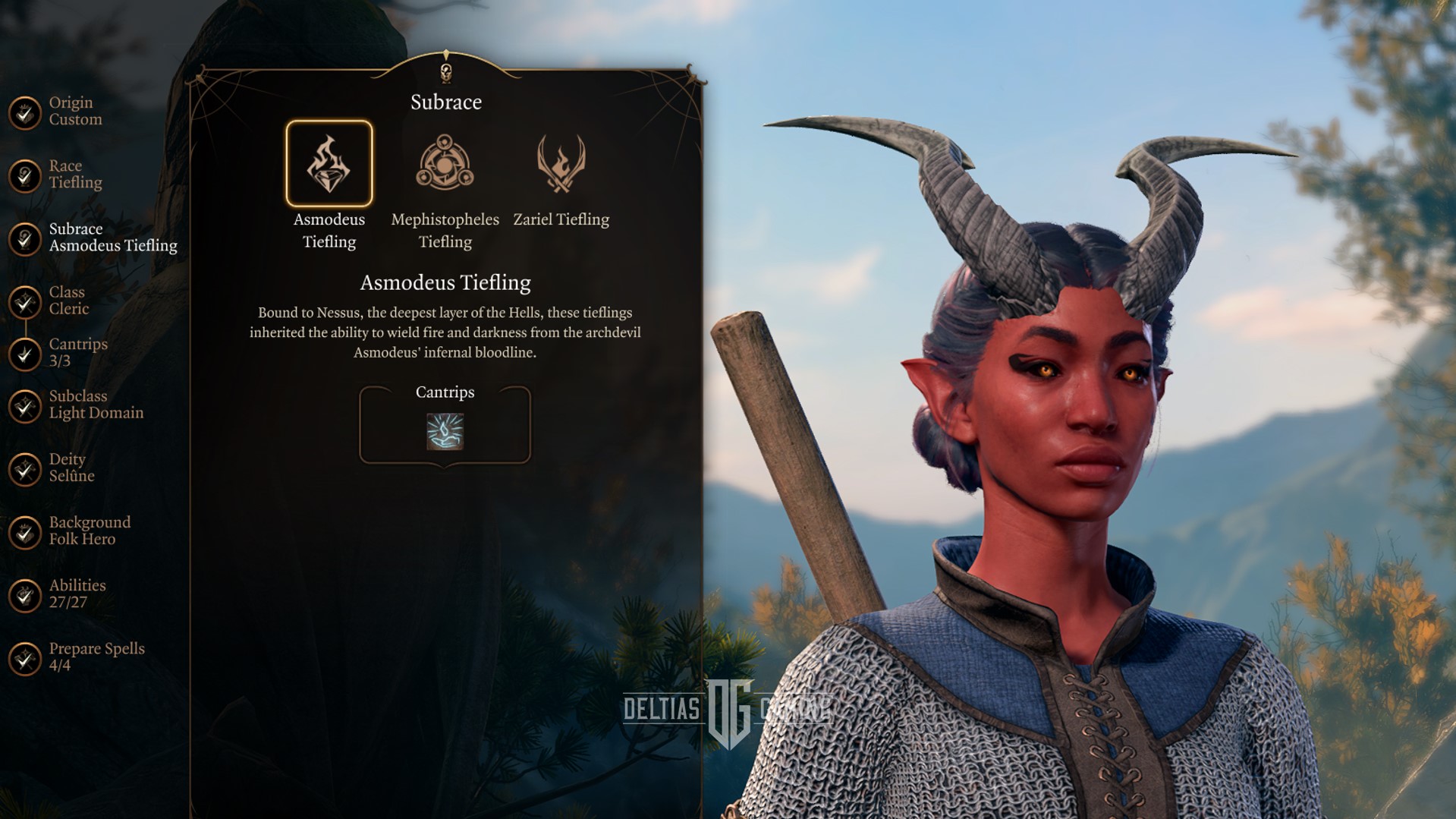
The best race choice for Light Domain Cleric Build in Baldur’s Gate 3 is Asmodeus Tiefling because you get a Hellish Rebuke, fire resistance, dark vision, and an extra Darkness spell. This helps with returning damage to attackers with Hellish Rebuke. The second choice is High Elf because you have extra Cantrip, Fey Ancestry, and Darkvision.
When choosing a race for your Cleric, consider the racial traits that improve your ability score main stat. Each of these races offers unique advantages that can enhance your combat prowess, survivability, or utility. Additionally, consider the roleplaying opportunities and character concepts that resonate with you when using the Baldur’s Gate 3 Cleric Build Guide.
| Asmodeus Tiefling | High Elf |
|---|---|
| Fire Resistance | Elven Weapon Training |
| Hellish Rebuke | Extra Cantrip |
| Darkness | Fey Ancestry |
| Darkvision | Darkvision |
The Cleric’s racial choice will not influence ability score, but everyone should get a +2 and +1 to spend regardless. This frees your race choice up to not completely hinder yourself based on ability score, but race features. Each of these races offers unique advantages that can enhance your combat prowess, survivability, or utility.
Recommended Backgrounds For Light Domain Cleric

Folk Hero is the Best Background for a Light Cleric in Baldur’s Gate 3 because it gives two Wisdom-based skills that help in non-combat situations. But if you want to make the most out of the build, Clerics should choose at least a few of the following proficiencies: Animal Handling, Perception, Insight, Medicine, and Survival. Those proficiencies buff your Wisdom which is your primary statistic. You can also invest a little more into a Dexterity bonus to increase survivability. It all depends on your first playstyle choice.
In our guide, we recommended using the Folk Hero background for the Baldur’s Gate 3 Cleric build. Additional choices are:
- Folk Hero: Proficiency in Animal Handling (wisdom) and Survival (wisdom). You’re a champion of the common people, challenging tyrants, and monsters to protect the helpless. Folk Hero companions in BG3 are Minsc and Wyll.
- Guild Artisan: Proficiency in Insight (wisdom) and Persuasion (charisma). Your skill in a particular craft has earned you membership in a mercantile guild, offering privileges and protection while engaging in your art. No Guild Artisan companions in BG3.
- Acolyte: Proficiency in Insight (wisdom) and Religion (intelligence). You have spent your life serving a temple, learning sacred rites, and providing sacrifices to the god or gods you worship. Shadowheart is an Acolyte.
Deities
This affects only a roleplaying aspect of the game, so pick whatever suits your character. For example, you can access a special hidden dialogue option with Shadowheart if you pick Selune as the god you worship.
Recommended Skills for Light Domain Cleric

Religion and Insight are the best skills for the Cleric Light Domain Build because they are useful when encountering scenarios in the open world or through dialogue. In Baldur’s Gate 3, skills represent the abilities and proficiencies of your character that allow them to perform various actions and interact with the game world. Skills are associated with specific attributes and are used to determine the success or effectiveness of certain actions or abilities. They can be edited during character creation or with companions, during respec or reroll screen.
Here are the skills for the Light Domain Cleric in Baldur’s Gate 3:
- Religion: is an Intelligence skill that helps recognize deities and holy rites.
- Insight: is a Wisdom skill useful in dialogue to detect lies and read people.
Abilities Distribution for Baldur’s Gate 3 Cleric Light Domain Build

Below is the best ability score to unlock the full potential of the best Light Domain Cleric Build in Baldur’s Gate 3:
| Ability | Score |
|---|---|
| Strength | 8 |
| Dexterity | 14 |
| Constitution | 16 |
| Intelligence | 10 |
| Wisdom | 16 |
| Charisma | 10 |
The most important ability score for the Light Domain Cleric is 16 Wisdom followed by 16 Constitution and 14 Dexterity. Wisdom influences your spells power and percentage to land while Constitution increases health and helps with concentration saving throws. Dexterity is also important and 14 gives us +2 to AC while wearing medium armor. The 16, 16, 14 setup is optimal for this Domain Light build.
During character creation, the game will automatically distribute your abilities in the character creation abilities tab. You will need to reprioritize the stats for the chart for the Baldur’s Gate 3 Cleric Build Guide Guide. Simply use the plus-minus in the character creator and make sure you have the suggested race, or the numbers will be off.
You can increase your ability score via a quest in Act 1, Act 2, and Act 3. Make sure to check out our Permanent bonus guide on how you can boost your ability score through quests.
Best Companions for Light Domain Cleric Build
For the Light Cleric Build, we do not recommend another upfront damage dealer as both you and either Lae’zel or Karlach will fulfill that role. The premise of the build is to have one to two melee fights with a heavy damage dealer, your Cleric providing support. Having range casters and damage dealers will help with crowd control, area damage, and burst at range.
- Lae’zel (Fighter): damage, high survivability, and in-your-face aggression.
- Gale (Wizard): range magic damage, crowd control, and utility spells.
- Astarion (Rogue): High Initiative, damage, lockpicking, and sneaking
It’s important to note that party composition and synergy play a significant role in determining the effectiveness of your companions. Consider the strengths and weaknesses of each companion and how they align with your main character’s abilities and playstyle when playing this Baldur’s Gate 3 Cleric Build Guide.
Cleric Spell Slots
Here is a list of the Clerics’ Spell Slots as they progress:
| Cleric Level | 1st | 2nd | 3rd | 4th | 5th | 6th |
|---|---|---|---|---|---|---|
| Level 1 | 2 | 0 | 0 | 0 | 0 | 0 |
| Level 2 | 3 | 0 | 0 | 0 | 0 | 0 |
| Level 3 | 4 | 2 | 0 | 0 | 0 | 0 |
| Level 4 | 4 | 3 | 0 | 0 | 0 | 0 |
| Level 5 | 4 | 3 | 2 | 0 | 0 | 0 |
| Level 6 | 4 | 3 | 3 | 0 | 0 | 0 |
| Level 7 | 4 | 3 | 3 | 1 | 0 | 0 |
| Level 8 | 4 | 3 | 3 | 2 | 0 | 0 |
| Level 9 | 4 | 3 | 3 | 3 | 1 | 0 |
| Level 10 | 4 | 3 | 3 | 3 | 2 | 0 |
| Level 11 | 4 | 3 | 3 | 3 | 2 | 1 |
| Level 12 | 4 | 3 | 3 | 3 | 2 | 1 |
Spells, Prepared Spells, and Cantrips
Here are the important Spellcasting mechanics we will be using in the Cleric Light Domain Build:
- Cantrips are similar to spells, but you can cast them infinitely, and they don’t take your spell slots.
- Prepared Spells will use your spell slots, and you must prepare them and then do a Long Rest that consumes food and resources to be able to use them. You can prepare your first set of spells during the character creation, so we’ll discuss those in detail later in the guide.
- You will also receive a set of spells that are your Light Domain subclass and cleric class spells: Fairie Fire and Burning Hands. Both are always available to use, and both are great spells.
- Concentration is a spell mechanic in Baldur’s Gate 3 that some spells require to maintain and keep their magic active. Many Cleric spells and cantrips are based on Concentration, such as Guidance, Resistance, Bless, Bane, or Fairie Fire. And you can concentrate only one spell at a time.
- Concentration is a reason why having extra ability points in the Constitution is important. Each time you take damage, you must do a Constitution Saving Throw. If you fail, you stop “concentrating” on a spell, and the effect ends. And you wasted the spell or turn.
Cleric Illithid Powers

Illithid Powers is a skill tree, unlocked later in the game when you learn more about the Mind Flayers and Tadpoles, with some very strong powers. If you decide to advance into it, you can collect jars of Mind Flayer Parasite Specimens, and consume them to gain one point.
Here are the best Illithid Powers for the Cleric Build:
| Illithid Powers | Description |
|---|---|
| Luck of the Far Realms | When you make a successful Attack Roll against a foe, you can change that hit into a Critical Hit. |
| Cull of the Weak | When you bring a creature down to fewer hit points than your number of evolved Illithid powers, it dies and all nearby creatures take 1-4 Psychic damage. |
| Psionic Backlash | When an enemy within 9m casts a spell, you can use your reaction to inflict ld4 Psychic damage to the caster per the spell’s level. |
| Blackhole | Area-based suck-in that slows targets. |
| Repulsor | Massive area knockback that can hit friendlies. |
| Charm | This is the priority power you want to obtain because you can force enemies to attack something else. |
Related:
Light Cleric Level Progression
| Level | Class | Selection |
|---|---|---|
| 1 | Cleric | Sublcass: Light, Guidance, Sacred Flame, Guidance, Thaumaturgy, Guiding Bolt, Cure Wounds, Inflict Wounds, Shield of Faith |
| 2 | Cleric | Turn Undead, Radiance of the Dawn, Command |
| 3 | Cleric | Spiritual Weapon, Flaming Sphere, Scorching Ray |
| 4 | Cleric | Feat: Ability Improvement Wisdom, Blade Ward, Lesser Restoration |
| 5 | Cleric | Daylight, Fireball, Destroy Undead, Mass Healing Word, Glyph of Warding |
| 6 | Cleric | Speak with Dead |
| 7 | Cleric | Wall of Fire, Guardian of Faith, Banishment |
| 8 | Cleric | Feat: Spell Sniper, Eldritch Blast, Animate Dead |
| 9 | Cleric | Flame Strike, Destructive Wave, Mass Cure Wounds |
| 10 | Cleric | Divine Intervention, Resistance, Greater Restoration |
| 11 | Cleric | Planar Ally, Heal |
| 12 | Cleric | Feat: Ability Improvement Wisdom, Heroes’ Feast |
Alternative Light Cleric Build
The best alternative to the typical DPS Light Clerc build is a “tank” setup that also multiclasses into Fighter. This alternate build focuses on debuffing enemies with Radiating Orb via Luminous Armour. You can obtain this gear in Act 1 and use it throughout the game while maintaining decent damage with Spirit Guardians. Although this build can be more complex to master, we recommend it if you struggle with survival in tough fights.
| Level | Class | Selection |
|---|---|---|
| 1 | Cleric | Subclass: Light, Thaumaturgy, Guidance, Sacred Flame, Command, Guiding Bolt, Sanctuary, Healing Word |
| 2 | Cleric | Shield of Faith |
| 3 | Cleric | Spiritual Weapon |
| 4 | Cleric | Feat: Alert, Blade Ward, Aid |
| 5 | Cleric | Spirit Guardians, Swap Healing Word for Mass Healing Word |
| 6 | Fighter | Multiclass: Fighter, Defence Fighting Style |
| 7 | Fighter | Action Surge |
| 8 | Fighter | Subclass: Eldritch Knight, Booming Blade, Fire Bolt, Shield, Thunderwave, Longstrider |
| 9 | Fighter | Feat: Ability Improvement +2 Wisdom, Chromatic Orb |
| 10 | Cleric | Multiclass: Cleric, Protection from Energy, Glyph of Warding |
| 11 | Cleric | Drop Shield of Faith, Add Freedom of Movement and Death Ward |
| 12 | Cleric | Feat: War Caster, Banishment |
Level 1

At Level One follow our character creation steps above to pick all correct background, race, skills, and ability score distributions focusing on Wisdom and Constitution. You want to use medium armour with Quarterstaff and Shield. The Cleric picks their subclass at level 1, which will unlock a massive amount of cantrip, subclass spells, and prepared spells. Your subclass selection will grant always prepared spells. So, if you see some on your quick bar or spellbook that you didn’t select, they come from the Light subclass. The Light subclass emphasizes spell damage dealing rather than support and healing. Thus, we will lean into those benefits and you should see those selections.
Light Subclass Unlocks
- Warding Flare: Shield yourself with divine light. Use your reaction to impose disadvantage on an attacker, possibly causing their attack to miss. Helps when getting attacked.
- Faerie Fire Spell: All targets within the light turn visible, and Attack Rolls against them have Advantage. Gives an advantage that helps with damage by rolling two D20 dice and taking the highest of the two.
- Burning Hands Spell: 3d6 fire damage in a 5m cone. Great Conal fire damage spell.
- Light Cantrip: Infuse an object with an aura of light. Help while exploring and in combat without Darkvision racial features.
Read More – Top 10 builds for Baldur’s Gate 3
Recommended Cantrips
- Sacred Flame: Conjure a flame-like radiance that deals 1d8 Radiant. This Cantrip acts with a very low damage range ability that can be used without a spell slow.
- Guidance: Bestow guidance upon an ally. They gain a +1d4 bonus to Ability Checks. This spell is critical during dialogue checks and is very useful outside of combat.
- Thaumaturgy: Gain Advantage on Intimidation and Performance Checks. Another helpful noncombat-related cantrip.
Prepare Spells
The gameplay at this level is using Guiding Bolt for damage. You can also use Shield of Faith or Blessed as a buff that requires concentration but not both. Inflict Wounds hits very hard all, and rely on Sacred Flame cantrip when out of spell slots. You can select Firebolt cantrip with the Elf race as well.
- Guiding Bolt: 4d6 Radiant damage that grants Advantage on the next Attack Roll against the target. This is very high damage early and helpful because of the Advantage component. Consider this your main offensive spell.
- Inflict Wounds: 3d10 damage necrotic. Used in melee range for good damage.
- Cure Wounds: 1d8 heal requiring you to touch the creature to heal it. Melee-based heal isn’t that powerful but at early levels, it can be combined with Healing Word for two heals in one turn.
- Shield of Faith: use a bonus action to grant 2 AC to a character. Useful because this spell requires bonus action, not an action to provide protection.
Light Cleric Gameplay & Priorities
During the early phase of BG3, your Light Cleric should equip a Quarterstaff and Shield as soon as possible. The Cleric lacks inherited mobility, but this can be remedied later in Act 1 with the Amulet of Misty Step and Haste Helm. Moreover, look to acquire the Elixir of Bloodlust and Potion of Speed. These two consumables can combine giving you extra actions and, thus extra damage.
Your overall priority with the Light Cleric build is the following:
- Complete Prologue
- Recruit Other Companions
- Reached Hollowed City/Druid Grove
- Sell, Stock up, complete quest
- Unlock Withers, respec to proper ability score
- Progress to level 5
- Reach Underdark and Grymforge
Following these steps ensures a strong foundation, especially if you plan on playing solo or on Honour Mode difficulty.
Level 1 Light Cleric Spells: Cure Wounds, Inflict Wounds, Guiding Bolt, and Shield of Faith.
Read More – Baldur’s Gate 3 Shadow Magic Sorcerer Build
Level 2
You’ll receive an extra spell slot, so you’ll be able to cast an extra spell before requiring a long rest. Also, at level 2, you can prepare 5 spells, and you get the Channel Divinity charges. The gameplay stays the same for the most part, adding Radiance of the Dawn, which gives you a damage boost. Turn Undead can be handy in specific fights. The Command spell is great for crowd control, use it to drop opponents’ weapons or put them in prone status effect.
Subclass Unlocks:
- Turn Undead (all clerics): Inflicts “Turned“. Present your holy symbol and pray. Each undead that can see or hear you is forced to flee from you. Not a bad spell with a specific mechanic called “Turn” Upon casting, the enemy will have to perform a wisdom saving throw. If they fail, they will run away. It has a nice range and hits multiple targets, but they must be within the line of sight of your cleric.
- Radiance of the Dawn (light domain subclass) – Harness the sun’s divine power to dispel any magical darkness and deal (2d10 + cleric level ) Radiant to hostile creatures within range. On a successful saving throw, creatures only take half damage. It doesn’t affect creatures that have total cover from you. It’s easier to use this on melee characters but also deals a shocking amount of damage on range build
Prepare New Spells:
- Command: Command a creature to flee, move closer, freeze, drop to the ground, or drop their weapon 18m requiring concentration. This is a powerful area-based crowd-control effect that can force weapons to drop. Use this early in the game when overwhelmed with enemies.
Use Turn Undead in fights where it’s just Undead. This won’t be used much, but during Undead Fights, you can do a massive amount of damage, and crowd control a huge group.
Level 2 Light Cleric Spells: Guiding Bolt, Inflict Wounds, Shield of Faith, Cure Wounds, Command
Level 3
Similarly, you’ll get an additional spell slot, and some spells will be available as level 2 spells. Higher-level spells deal more damage, and their effects last longer. So take advantage of it as soon as you get access to those at level 3.
Subclass Unlocks:
- Flaming Sphere: Summon a flaming sphere that damages nearby enemies and objects. The sphere sheds bright light in a 6m radius, and dim light for an additional 6m. Amazing Summon that not only has decent hit points especially early in the game, but also can damage the enemies.
- Scorching Ray: Hurl 3 rays of fire. Each ray deals 2∼12 Fire damage. Great spell overall, that deals decent damage and you’ll find yourself using it a lot, even or later levels.
Prepare New Spell:
- Spiritual Weapon: Summon a spiritual weapon that can attack enemies nearby. This is amazing because you can use bonus action AND it doesn’t cost concentration. Recommend spear form, each form has a different attack that can debuff the enemy.
Use Spiritual Weapon on turn one with a bonus action, then either Bless or Guiding Bolt with your action. Bless is more a group utility spell but is still powerful as a damage dealer.
Level 3 Light Cleric Spells: Guiding Bolt, Inflict Wounds, Shield of Faith, Cure Wounds, Command, Spiritual Weapon
Level 4
At level four, the Cleric gets one cantrip, one more prepared spell, and a feat or ability improvement. We suggest you increase your ability score Wisdom by 2, because you will now hit 18 and be able to prepare an extra spell. Gameplay at this level doesn’t change much, expect more damage and healing with a higher ability score.
Recommended Feat:
- Ability Improvement: add +2 Ability points to Wisdom
Prepare New Cantrip:
- Blade Ward: Take only half of the damage from Bludgeoning, Piercing, and Slashing attacks. This is a decent cantrip when expecting incoming melee damage.
Prepare New Spell:
- Lesser Restoration: Cure a creature from disease, poison, paralysis, or blindness. Now you can remove some status effects and you’ll find it useful in many situations early in the game.
Consider Hold Person as a good option if you don’t use Blessed Frequently. This is because both require concentration. At these early levels, the Light Cleric seems to lack luster because lack of area damage spells. That will improve drastically next level!
Level 4 Light Cleric Spells: Guiding Bolt, Inflict Wounds, Shield of Faith, Cure Wounds, Command, Spiritual Weapon, Lesser Restoration
Level 5
At level five, the Light Cleric gets two free spells via your subclass and you get to pick a level 3 spell. The best healing option here is Mass Healing Word because it’s massive AOE healing and requires a bonus Action rather than an action.
Subclass Unlocks:
- Daylight: Enchant an item to shine like the sun or summon a sphere of sunlight that dispels all darkness around it. Useful especially if you or other companions in your group don’t have dark vision.
- Fireball: Shoot a bright flame from your fingers that explodes upon contact, torching everything in the vicinity. On Save: Targets still take half damage. Simply a fantastic AoE spell that deals a massive amount of damage to the enemies in the area.
- Destroy Undead: When you successfully Turn an undead creature, it also takes 4-24 Radiant Damage. Good Addition to your damage spell toolkit
Prepare New Spells:
- Mass Healing Word: heal for 1d4+3 up to 6 creatures.
- Usage: Using a bonus action his is a very powerful wide area-based heal that can be combined with an action in the same turn.
- Glyph of Warding: Decent AoE that can apply different magical and status effects
- Inscribe a circle of arcane glyphs on the ground that triggers a magical effect when stepped on by an enemy.
Level 5 Gameplay Light Cleric
At this level, you should feel a massive boost in power. You will gain access to two powerful area-based damage spells, Fireball and Glyph of Warding. Fireball is one of the top damage spells that can be upcast. Meaning, you can spell higher-level spell slots later in leveling to do even more damage. The glyph of warding is useful because you can pick the element type. This is helpful when enemies are resistant to fire or vulnerable to cold, etc. Moreover, make sure you don’t include friendly allies in your area radius. They too will take damage, so adjust your circle when casting.
Additionally, Destroy Undead now makes Turn Undead much more powerful. They will essentially take a lot of Radiant Damage. Therefore, you prioritize Luminous Armour during Act 1. This creates a Radiant Shockwave and debuffs enemies for an ultra-powerful combination.
Level 5 Light Cleric Spells: Guiding Bolt, Inflict Wounds, Shield of Faith, Cure Wounds, Command, Spiritual Weapon, Lesser Restoration, Glyph of Warding, Mass Healing Word
Level 6
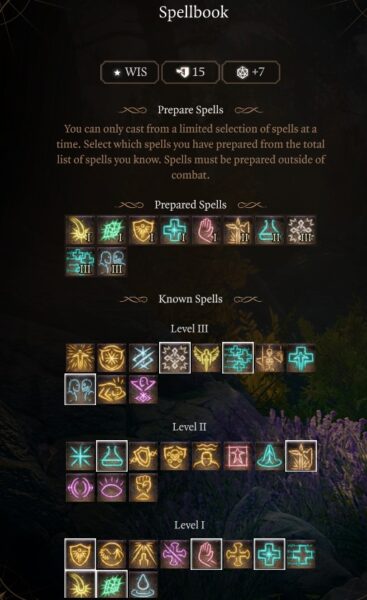
At level six for a Light Cleric, you gain another level 3 spell, and Improved warding Flare. Start with summoning Spiritual Weapon with bonus action on the first turn. Usually cast Fireball to the stacked enemies or use Guiding Bolt on the strongest enemy. Use Mass Healing Word and Cure Wounds for healing if necessary.
Prepare New Spells:
- Speak with Dead: Allow a corpse that still has a mouth and is not an undead to answer 5 questions to the caster. Useful mainly outside of combat
Ending Act 1 as a Light Cleric
Around Level 6, you should be close to transitioning out of Act 1. Be sure to check traders and stock up on camp and alchemy supplies. Additionally, make sure to look over the best Act 1 items. Furthermore, there are also permanent bonuses you don’t want to miss in Act 1. Finally, the Grymforge has powerful armor and weapons (Adamantine) that can be used well into Act 3. Consider taking the time to collect the crafting items before moving on to Act 2, where you won’t be able to return.
Level 6 Light Cleric Spells: Guiding Bolt, Inflict Wounds, Shield of Faith, Cure Wounds, Command, Spiritual Weapon, Lesser Restoration, Glyph of Warding, Mass Healing Word, Speak with the Dead
Level 7
At level 7, the Light Cleric gains one level 4 spell slot and two subclass-specific spells. The first turn is crucial, try to cast Spiritual Weapon and the Fireball. Then, you go into priority mode emphasizing healing if you don’t have another dedicated healer in a group or damage if your team is in good condition. Also, utilize Glyph of Warding for area damage and Guiding Bolt for a single target. If you need crowd control (CC) use Banishment.
Subclass Unlocks
- Wall of Fire: Create a blazing wall of fire, burning anyone who dares stand too close. It can be useful in some situations, for example, a tight doorframe or passage separates your range of characters and enemies. If you cast the Wall of Fire in this specific place, melee foes will be forced to pass it to get to your characters and take damage. Keep in mind, this spell requires concentration so be careful not to cast when already holding concentration.
- Guardian of Faith: Hostile creatures within a 10-ft radius of the created guardian must succeed on a Dex. save or take 20 radiant damage. This summonses a created guardian who cannot move but deals damage in a 10ft radius. Every time it does damage, it takes damage. The nice thing about this spell is it can be used in conjunction with a Spiritual Weapon. One is an action, one a bonus action and BOTH do not require concentration. So, on turn one, you can drop down Guardian in the middle of the action along with Spiritual Weapon.
Prepare New Spells:
- Banishment: Temporarily Banish your target to another plane of existence. Another great crowd-control Spell at the cleric’s disposal.
Level 7 Light Cleric Spells: Guiding Bolt, Inflict Wounds, Shield of Faith, Cure Wounds, Command, Spiritual Weapon, Lesser Restoration, Glyph of Warding, Mass Healing Word, Speak with the Dead, Banishment
Level 8
At level 8 the Light Cleric gets Potent Spellcasting, an additional level 4 spell slot, and a feat. Not many changes at this level, gameplay stays the same.
Recommended Feat:
- Spell Sniper: Eldritch Blast is the best cantrip in the game and the spell sniper feat guarantees you’ll get higher damage with your spells.
- Eldritch Blast: Conjure beam(s) of crackling energy. This cantrip creates more than one beam when you reach higher levels: two beams at the 5th level and three beams at the 10th level. Each beam is rolled separately.
Unlike Melee Builds, spellcasters have limited damage options. War Caster is a good feat if you find yourself always holding concentration spells. Shield Master is good for survivability, while Lucky is a good offensive and defensive feat.
- Potent Spellcasting: Your god grants you even more intense power. You can add your Wisdom Modifier to the damage you deal with cantrips. This subclass feature will increase your damage with spells.
- Animate Dead: Create an undead servant from a corpse. Good summoned creature to have at your disposal. This must be done outside of combat, so look for random corpses to summon before combat.
Level 8 Light Cleric Spells: Guiding Bolt, Inflict Wounds, Shield of Faith, Cure Wounds, Command, Spiritual Weapon, Lesser Restoration, Glyph of Warding, Mass Healing Word, Speak with the Dead, Banishment, Animate Dead
Level 9
At level 9, the Cleric gets two free spells, Mass Cure Wounds, Great Restoration, one level 4 spell slot, one level 5 spell slot, and an additional prepared spell bringing the total to 13. At this level, you have much better area-based damage and some decent healing. You now have two high-level spells that can be used with or without concentration and even better healing making this level a big power increase.
- Flame Strike: Up to 6 creatures regain 3d8+Spell Ability modifier
- Destructive Wave: End one condition (charmed or petrified), one curse, any ability scores or hp reduction, or one exhaustion level.
- Mass Cure Wounds: Up to 6 creatures regain 3d8+Spell Ability modifier. Fantastic mass healing spell, extremely strong on Cleric regardless of subclass.
Level 9 Light Cleric Spells: Guiding Bolt, Inflict Wounds, Shield of Faith, Cure Wounds, Command, Spiritual Weapon, Lesser Restoration, Glyph of Warding, Mass Healing Word, Speak with the Dead, Banishment, Animate Dead, Mass Cure Wounds
Multiclassing Options
I also have some thoughts on multiclassing the Cleric at this level. At Level 9, the Cleric can decide to multi-class. This has some pros and cons and I’ve found it better to fully level the Light Cleric so you can reach level 6 spells. Here’s a brief breakdown of options:
- Fighter (two levels): The fighter with two levels has Action Surge. This gives you an additional action once per fight and recharges on short rest. The Clerics’ main issue is lacking multiple actions, and this helps to solve that. You do lose out on level 6 spells and another feat but it’s an option.
- Sorcerer (four levels): the Sorcerer gets access to metamagic giving you extra ways to manipulate magic. One is Twinned, in which you can cast a single target spell twice. Another, Quickened, you can cast another spell with your bonus action. This is helpful to complement the clerics’ weaknesses. The big downside is you’ll miss out on higher-level spells
- Druid (three levels): Wild Shape can be helpful simply for extra health and utility.
- Rogue/Thief (three levels): this is a decent option because you can get an additional bonus action. While not that helpful, it can help as a utility resource.
Overall, the Cleric isn’t that useful to multiclass. The reason is, that you use Wisdom as a primary spellcasting modifier. Thus, Druid is the logical choice, but that class doesn’t unlock powerful subclass passives in early levels. The Sorcerer and Rogue/Thief give you extra resources, but sticking to just Cleric is easy, simple, and effective.
Level 10
At level 10, the Life Cleric gets a class feature Divine Intervention, one cantrip, another spell slot, and another prepared spell for the Baldur’s Gate 3 Cleric Build Guide.
- Divine Intervention: You can cast Divine Intervention to invoke your God’s aid. Once used, this can never be used again. You have a couple of options with this one-time-only spell, but the obvious one is a damage spell. It’s a massive area and huge damage. I suggest saving this for the last boss or something you just cannot complete.
Prepare New Cantrip:
- Resistance: Make a target more resistant to spell effects and conditions: It receives a +1d4 bonus to Saving Throws. This is a support cantrip that can increase the survivability in challenging fights.
- Greater Restoration: End one condition (charmed or petrified), one curse, any ability scores or hp reduction, or one exhaustion level. Same as the restoration utility spell, but can end more status effects.
Level 10 Light Cleric Spells: Guiding Bolt, Inflict Wounds, Shield of Faith, Cure Wounds, Command, Spiritual Weapon, Lesser Restoration, Glyph of Warding, Mass Healing Word, Speak with the Dead, Banishment, Animate Dead, Mass Cure Wounds, Great Restoration
Level 11
At level 11, the Light Cleric domain unlocks one level 6 spell slot and learns one new spell for a total of 15 prepared spells.
- Planar Ally (spell selection): Beseech one of these otherworldly entities for aid.
Here you get only one spell slot and will not gain an additional spell slot. There are two Quarterstaves that bypass this issue in Act 3: the Staff of Spellpower or Markoheshki. With either of these quarterstaves, you can negate a spell slot, essentially cheesing two level 6 spell slots.
Light Cleric Prepared Spells: Guiding Bolt, Inflict Wounds, Shield of Faith, Cure Wounds, Command, Spiritual Weapon, Lesser Restoration, Glyph of Warding, Mass Healing Word, Speak with the Dead, Banishment, Animate Dead, Mass Cure Wounds, Great Restoration, Planar Ally
At this level, two amazing spells last until a long rest Planar Ally and Heroes’ Feast. Pick Planar Ally at this level and summon a Deva which has good health, high movement speed, and big damage. The best part of the Planar Ally is it stacks with other summons, thus you can have a little team roaming with you until a long rest! Free damage, utility, and distractions.
Also regarding gear, you may be able to collect Helldusk Armour which is considered the best. This Light Cleric does not get Heavy Armour proficiency, however, that Armour will allow you to use the heavy chest piece. Make that a priority when reaching Act 3 later game content.
Level 12
You’ve hit maximum level with the Baldur’s Gate 3 Cleric Build Guide! At this level, you should feel very powerful using multiple summons creatures. The Light Cleric is a valuable damage dealer and you can heal or buff your team with a decent spell combination.
Recommended Feat:
- +2 Ability Improvement to 20 Wisdom: Some items can get you to 22. High Wisdom helps with healing and damage.
Prepare New Spell:
- Heroes’ Feast: Produce a feast for 12 guests that cures diseases, immunizes to poison, and increases hp by 2d10 for 24 hours. This spell has good utility.
Make sure to check the below section for gear to collect and use while playing the Baldur’s Gate 3 Cleric Build Guide.
Level 12 Light Cleric Spells: Guiding Bolt, Inflict Wounds, Shield of Faith, Cure Wounds, Command, Spiritual Weapon, Lesser Restoration, Glyph of Warding, Mass Healing Word, Speak with the Dead, Banishment, Animate Dead, Mass Cure Wounds, Great Restoration, Planar Ally, Heroes’ Feast, Beacon of Hope
Best Gear for Baldur’s Gate 3 Cleric Light Domain Build
Beginner: Act 1
Below is the best beginner gear for the Cleric Light Domain Class in Baldur’s Gate 3:
| Gear Slot | Best Gear Item | Effect |
|---|---|---|
| Head | Circlet of Blasting | Free Scorching Ray |
| Cape | – | |
| Chest | Luminous Armour | Radiant Damage Shockwave |
| Gloves | Gloves of Missile Snaring | Intercepts Missiles |
| Boots | Disintegrating Night Walkers | Free Mobility |
| Necklace | Amulet of Misty Step | Free Misty Step |
| Ring | Ring of Absolute Force | Free Thunderwave |
| Ring | The Sparkswall | Resistance to lightning |
| Weapon 1 Main Hand | Melf’s First Staff | +1 Spell save and attack |
| Weapon 1 Off-Hand | Adamantine Shield | +2 AC, Shield Bash |
| Weapon 2 Ranged | Hunting Shortbow | Free Hunter’s Mark |
Below is the Best Act 1 Armour, Weapons, and Equipment for the Light Cleric in BG3:
- Circlet of Blasting: Sold by Blurg in the Myconid Colony. (Alternatives Haste Helm, or Grymskull Helm).
- Luminous Armour: Chest in Selunite Outpost, Underdark X: 176 Y: -247 (Alternatives Adamantine Scale Mail, or Githyanki Half Plate).
- Gloves of Missile Snaring: sold from Arron in Druid Grove Act 1 (Alternative Hellrider’s Pride).
- Disintegrating Night Walkers: Found in Underdark from True Soul Nere (Alternative Cinder Shoes).
- Amulet of Misty Step: Found in a Gilded Chest (X386 Y8) in Defiled Temple. (Alternative Moondrop Pendant).
- Ring of Absolute Force: Dropped by Sergeant Thrinn in Grymforge (Alternative Ring of Colour Spray).
- The Sparkswall: Obtained in a chest in Arcane Tower, Underdark Act 1 (Alternative Crusher Ring).
- Melf’s First Staff: Sold by Blurg in the Myconid Colony. (Alternative Staff of Crones, or Spellsparkler).
- Adamantine Shield: crafted in Gyrmforge, Underdark Act 1 (Alternative Glowing Shield, or Wood Woad Shield).
- Hunting Shortbow: Purchased from Dammon in Druid Grove.
Advanced: Act 3 End Game
The following table presents the best advanced and end-game gear for Cleric Light Domain Build in Baldur’s Gate 3:
| Gear Slot | Best Gear Item | Effect |
|---|---|---|
| Head | Helm of Balduran | +1 AC & Saves |
| Cape | Cloak of the Weave | +1 Saves & Roll |
| Chest | Helldusk Armour | 21 AC |
| Gloves | Quickspell Gloves | Bonus Action Cantrip |
| Boots | Helldusk Boots | Mobility & Hellcrawler |
| Necklace | Spellcrux Amulet | Restore spell slot |
| Ring | Killer’s Sweetheart | Auto Critical |
| Ring | Shifting Corpus Ring | Free Invisibility and Blur |
| Weapon 1 Main Hand | Markoheshkir | Free Spells, +1 Roll |
| Weapon 1 Off-Hand | Viconia’s Walking Fortress | +3 AC, Free Spells |
| Weapon 2 Ranged | Darkfire Shortbow | Free Haste, Fire & Cold Resistance |
Below are the Best Act 3 Armour, Weapons, and Equipment for the Light Cleric in BG3:
- Helm of Balduran: Found on an altar next to Ansur in The Wyrmway in Act 3 (Alternatives Helldusk Helmet, or Hood of the Weave).
- Cloak of the Weave: Sold by Helsik at the Devil’s Fee (Alternative Cloak of Protection).
- Helldusk Armour: Looted from Raphael in the House of Hope in Act 3 (Luminous Armour, or Adamantine Scale Mail, or Moon Devotion Robe).
- Quickspell Gloves: Purchased at Sorcerors’s Sundries (Helldusk Gloves, or Gemini Gloves).
- Helldusk Boots: Gilded Chest on the top floor of Wyrm’s Rock Fortress (Alternative Disintegrating Night Walkers).
- Spellcrux Amulet: Drop by The Warden in Moonrise Towers Prison X: 569 Y: -650 (Alternative Amulet of Greater Health).
- Killer’s Sweetheart: Found inside the Gauntlet of Shar ( X: -833 Y: -729). (Alternative Ring of Free Action).
- Shifting Corpus Ring: Drop by Fist Marcus at the Last Light Inn (Alternative Crypt Lord Ring).
- Markoheshkir: At Ramazith’s Tower (Alternative Staff of Cherished Necromancy, Staff of Spellpower, or Incandescent Staff).
- Viconia’s Walking Fortress: Can be looted from Viconia DeVir in Act 3 (Alternative Shield of Devotion).
- Darkfire Shortbow: Sold by trader Damon Act 2 Last Light Inn.
Best Consumable Items and Potions
Consumables are items that can be used once and then destroyed. They are typically used to restore health or other resources. Some common types of consumables include potions, scrolls, food, drinks, and arrows.
The following list represents the best individual use consumable items that will aid in the Best Baldur’s Gate 3 Cleric Light Domain Build Guide:
- Elixir of Bloodlust: Once per turn when you kill a foe, you gain HP 5 temporary hit points and an additional action.
- Potion of Speed: 3 turns of an increased action via the Haste condition.
- Potion of Angelic Slumber: fall asleep for two turns, then restore all spell slots, hit points, and abilities.
- Potion of Invisibility: Become invisible for 1 minute. Attacking or casting spells ends the status.
- Potion of Flying: 10 turns of flying.
- Elixir of Peerless Focus: gain advantage on concentration saves (ingredients Sublimate of Belladona, and any ashes).
- Elixir of Vigilance: gain +5 bonus initiative and you cannot be surprised (ingredients sublimate of bloodstained hook, any ashes).
- Superior Elixir of Arcane Cultivation: gain a level 3 spell slot (ingredients Solution of Night Orchid, any Vitriol).
- Elixir of Viciousness: increase your critical hit chance (ingredients Vitriol of Shadowroot Sac, any Ashes).
- Elixir of Universal Resistance: gain resistance to all damage (ingredients Vitriol of Divine Miasma, any Sublimate).
Permanent Bonuses
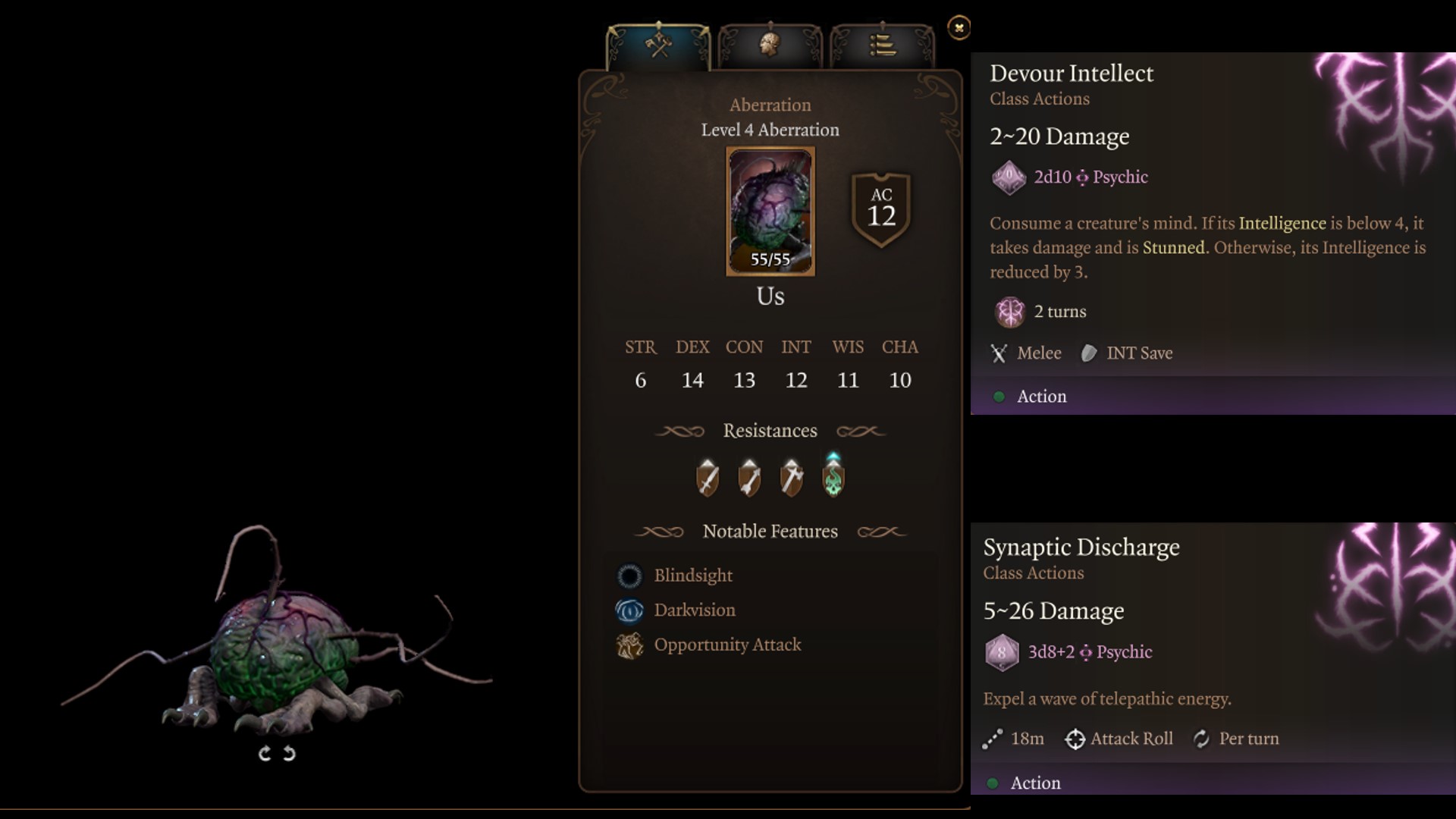
Throughout Baldur’s Gate 3, you will have the ability to gain permanent bonuses to your character. These can grant additional spells, ability scores, and other bonuses. Permanent Bonuses are not displayed throughout the campaign but are vital to increase overall combat performance. We have all permanent bonuses here in a guide, but the most important ones for you to collect are listed below.
| Act 1 | Act 2 | Act 3 |
|---|---|---|
| Auntie Ethel’s Hair: Gain +1 to an Ability Score. | Potion of Everlasting Vigour: Gain +2 Strength. | Mirror of Loss – +2 to an Ability Score of your choice. |
| Awakened: Use illithid powers as a Bonus Action. | Slayer Form: Ability to transform into the Slayer. | Partial Ceremorphosis: Access to tier 3 illithid Powers. |
| Scratch: Gain Find Familiar Scratch. | Summon Us: Allows you to summon Us. | Sweet Stone Features: Blessed permanent. |
| Cheeky Quasit: Gain Summon Quasit Shovel. | Statue of the Gods: +2 to Saving Throws | |
| Loviatar’s Love: 30% Hit Points or less, you gain a +2 bonus to Attack Rolls and Wisdom saving throws. | ||
| Necromancy Of Thay: access to powerful spells in Act 3. | ||
| Volo’s Ersatz Eye: See Invisibility |
Best Permanent Bonuses for Light Domain Cleric in Baldur’s Gate 3
Light Domain Cleric Gameplay Tips and Tricks
Here are 10 gameplay, combat tips, and tricks for using the Cleric in Baldur’s Gate 3:
- Heal Allies: Below level 5, focus on healing allies and transition to damage after level 5.
- Bonus Action: Try to consume your bonus action each turn with healing, Spiritual Weapon, or potions.
- Blessed: Cast Bless outside of combat before engaging and get a lot of turns without having to use a turn in combat.
- Crowd Control: CC opponents with Command and Banishment to take less damage overall.
- Cantrips: Use these when lacking spell slots are you’re not committed to a major offensive spell to keep some spell slots in reserve.
- Guiding Bolt: Early on this is your big nuke spell and it’s wise to use it on the first turn when teammates don’t need a heal.
- Area vs Single Target: When using Fireball or Glyph of Warding, make sure to not include friends as they will take damage.
- Consumables: Take advantage of a Potion of Speed when you need multiple actions per turn.
- Health Potions: Make sure teammates are stocked up on healing potions so you can focus on damage, not healing.
- Range: Keep your distance as you are a range damage dealer with the light cleric.
Remember, this build guide serves as a foundation, adapt it to match your gameplay and playstyle. Enjoy playing using our formidable Baldur’s Gate 3 Cleric Build Guide!
Cleric Class Changes in Patch 7 for BG3
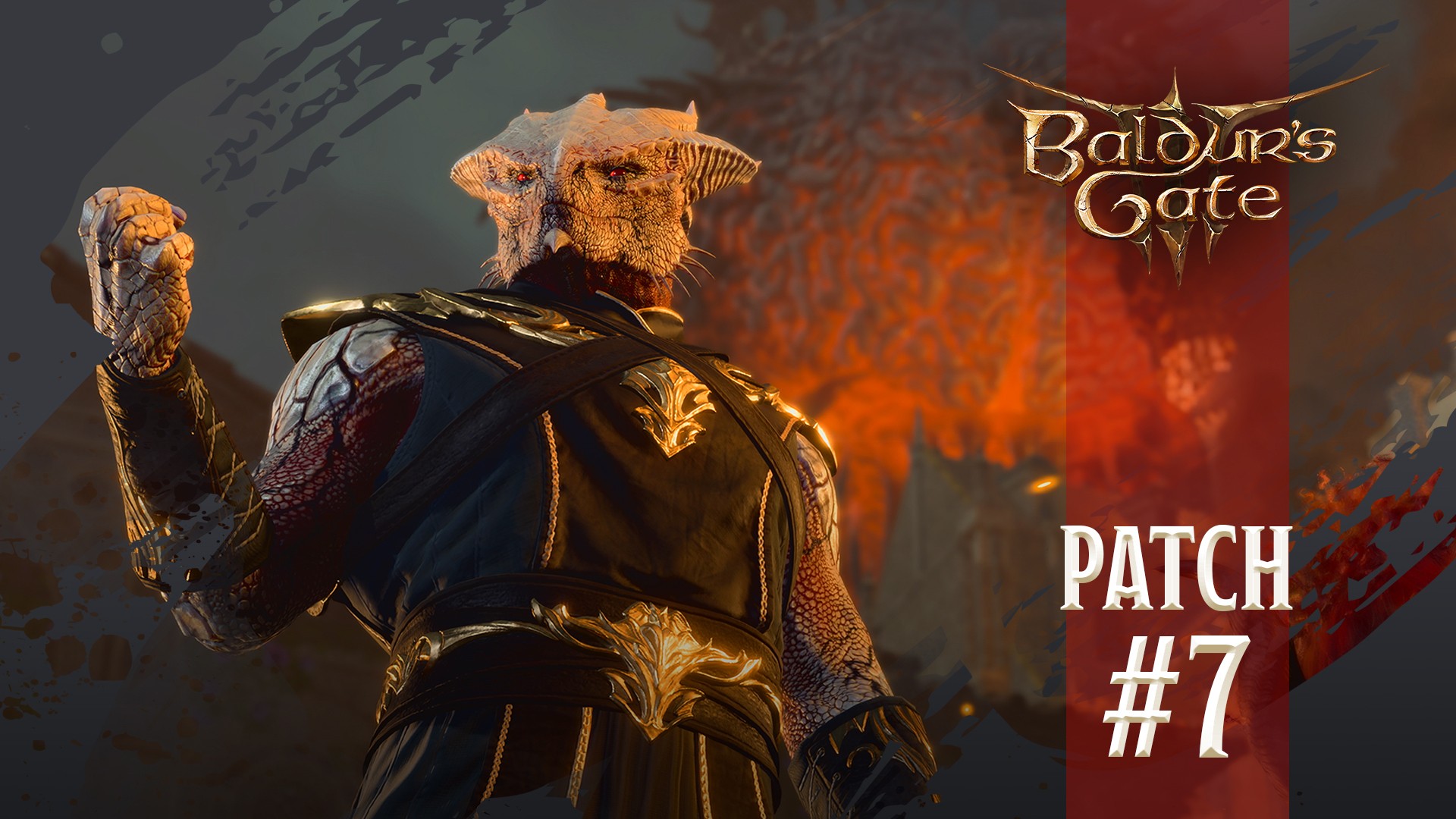
The Cleric Class received no changes in Patch 7 of BG3. Most builds, combat, and gameplay elements remained untouched, so if you are familiar with the class, almost all remain the same.
Larian Studios’ main focus in this patch is mods. The game now features a modding toolkit and an in-game mod manager, allowing players to create and install mods directly within the game. This update is intended to hand over creative control to the community, enabling players to produce unique content and continue the story in new ways. This best Cleric Build Guide remains unchanged, mainly in Baldur’s Gate 3 Patch 7.
Baldur’s Gate 3 Cleric Build Summary Guide
If you followed the guide, this is how your Baldur’s Gate 3 Cleric Build Guide should look:
Subclass: Light Domain
Armor: Medium
Weapons: Quarterstaff & Shield
Background: Folk Hero
- Strength – 8
- Dexterity – 14
- Constitution – 16
- Intelligence – 10
- Wisdom – 16
- Charisma – 10
Level Progression
- Level 1 – Light Subclass
- Level 2 – Command Spell
- Level 3 – Spiritual Weapon Spell
- Level 4 – Feat +2 Wisdom
- Level 5 – Glyph of Warding
- Level 6 – Speak with Dead Spell
- Level 7 – Banishment Spell
- Level 8 – Feat Spell Sniper
- Level 9 – Mass Cure Wounds
- Level 10 – Greater Restoration
- Level 11 – Planar Ally
- Level 12 – Feat +2 Wisdom
FAQs
Q1. Which cleric subclass is the best in BG3?
Light Domain, Life Domain, and Tempest Domain are among the best Cleric subclasses in BG3.
Q2. What is the best species for a cleric in BG3?
While it mostly depends on your subclass, you should be picking races that boost your Wisdom, Utility, and Durability. Some good picks can be Gold Dwarf and Wood Elf.
Q3. What are the best classes to mix with Cleric in BG3?
The best classes to multiclass with Cleric in BG3 are Cleric and Sorcerer, as they provide the best control, healing, and damage.
Looking For More About Baldur’s Gate 3?
Thank you for reading Baldur’s Gate 3 Cleric Build Guide Guide. We provide the latest news and create guides for Baldur’s Gate 3. Also, watch me play games on Twitch or visit my YouTube channel!
 Reddit
Reddit
 Email
Email
